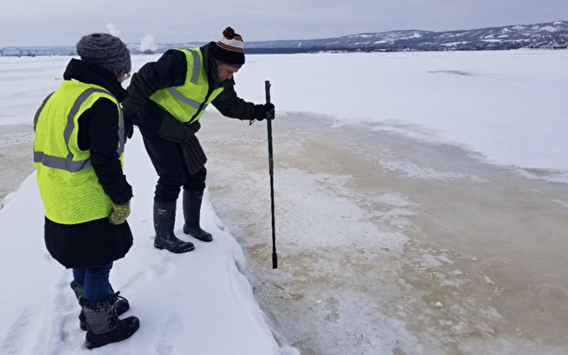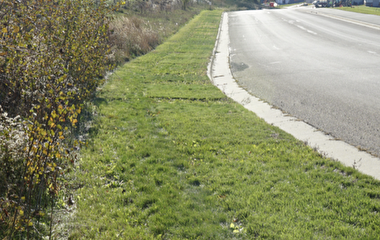
Winter maintenance crews want the safest and most effective ice-fighting products for Minnesota roads. Road salt generally works well to melt ice, but it corrodes metal, accumulates in bodies of water, and substantially impacts the environment. A potential alternative is potassium acetate, which is less corrosive and works at lower temperatures.
In work sponsored by the Minnesota Local Road Research Board, researchers studied the environmental consequences of using a potassium acetate product as an alternative deicer and anti-icer. They found that the chemical could be more toxic than anticipated and recommend it be used with caution.
Two research teams—one from the University of Minnesota and one from Iowa State University (ISU)—coordinated fieldwork, laboratory analyses, and modeling exercises in two companion research projects. Their shared goal was to investigate the fate, transport, and degradation of the product and its toxicity to plant and animal life.
At field sites near Duluth, the teams conducted evaluations over two winters. They collected water samples upstream from where the product was applied and from runoff and stormwater drains of roads that were treated with the product, as well as from roadside soil and receiving bodies of water.
ISU researchers found, unexpectedly, no observable biodegradation of potassium acetate during the study period, suggesting slow degradation in bodies of water. The University of Minnesota research team found that terrestrial and aquatic organisms were more sensitive to potassium acetate at lower levels than sodium chloride, primarily due to the potassium component.
“Both research teams collecting field samples resulted in more comprehensive data for which we each performed different analyses and unique modeling efforts,” says John Gulliver, professor emeritus with the U of M’s Department of Civil, Environmental, and Geo- Engineering and a resident fellow with the Institute on the Environment. “Our findings were consistent: Potassium is more toxic to the aquatic environment than we previously thought.”
The researchers concluded that caution should be used when determining where and when to use a potassium acetate product. MnDOT and local agencies are likely to use potassium acetate only for lower temperatures and at certain locations.
“This work was important in helping us understand where it makes sense to use potassium acetate for ice and snow control,” says Nicklas Tiedeken, hydrologist with the MnDOT Office of Environmental Stewardship and one of the project’s technical liaisons. “It’s not a silver bullet but will help in certain circumstances.”
The sampling methods and modeling tools developed in this work can help MnDOT and local agencies make decisions about other alternative deicers as well. Researchers prepared user guides so agencies can easily use these tools.


